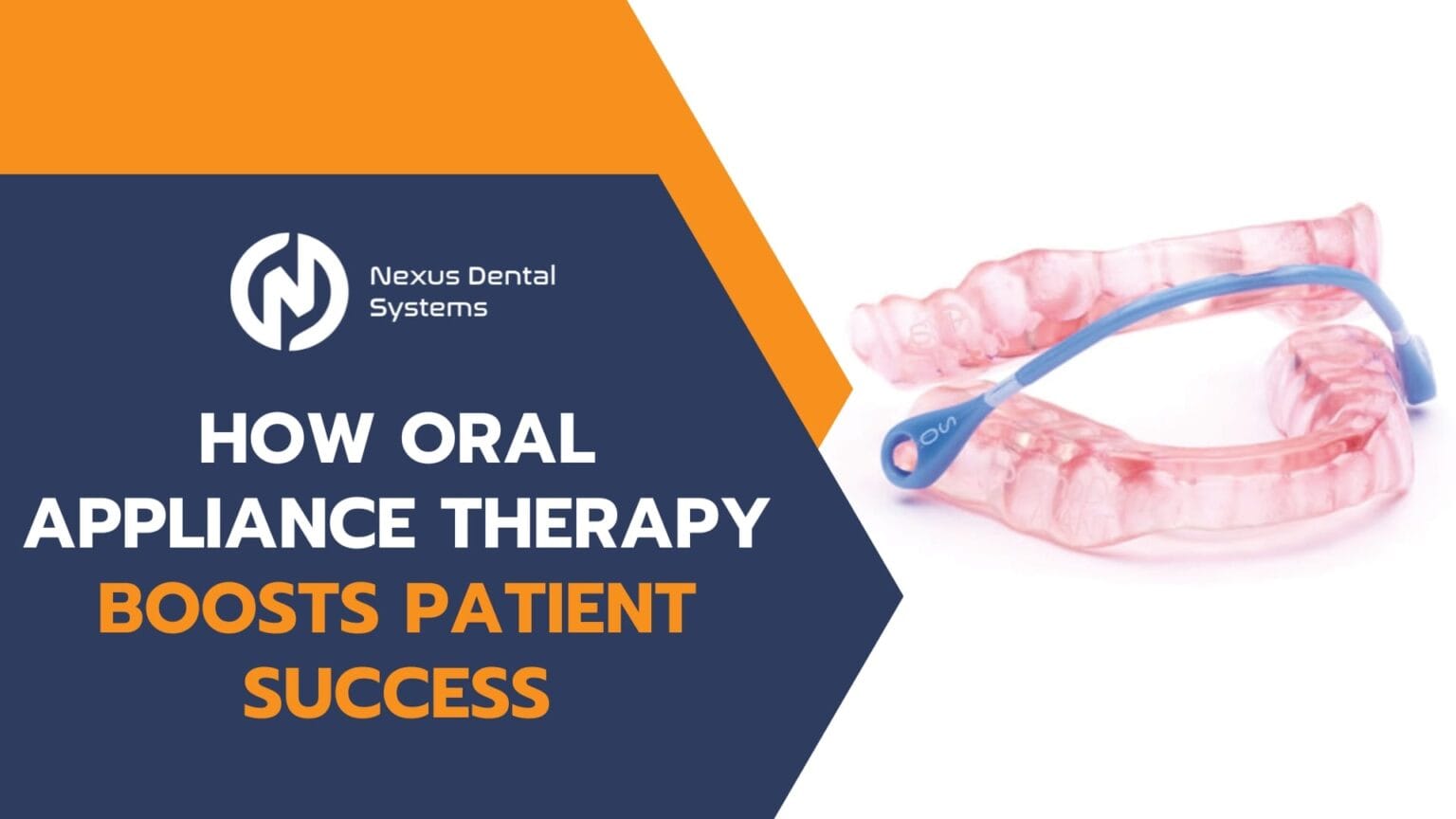By Chris Gillette RPSGT
Obstructive sleep apnea (OSA) is a growing health concern that affects millions of people worldwide. Characterized by the repeated collapse of the upper airway during sleep, OSA leads to fragmented sleep, reduced oxygen levels, and significant health risks, including cardiovascular disease, stroke, and diabetes. While Continuous Positive Airway Pressure (CPAP) therapy has long been the gold standard treatment, a growing body of research highlights the effectiveness of Oral Appliance Therapy (OAT) in treating mild to moderate cases of OSA. Dentists, particularly those trained in dental sleep medicine, play a crucial role in the diagnosis, treatment, and long-term management of OSA through OAT.
This blog explores how dentists can significantly impact the success of OSA treatment and why Oral Appliance Therapy is an increasingly popular option for patients.
The Importance of Early Detection
Dentists and their teams often serve as the first healthcare professionals to identify the signs of sleep-disordered breathing. With regular check-ups, dentists have the unique opportunity to observe anatomical factors that may contribute to OSA, such as:
- Crowded oropharyngeal space
- Large tongue or tonsils
- A high, narrow palate
- Retrognathia (a re-truded lower jaw)
Studies have shown that OSA remains undiagnosed in a significant number of patients. According to the American Academy of Sleep Medicine (AASM), nearly 30 million adults in the U.S. suffer from sleep apnea, but only 6 million are diagnosed. Dentists, especially those trained in sleep dentistry, can identify symptoms such as teeth grinding (bruxism), a red flag for sleep apnea, and prompt patients to undergo a sleep study.
How Oral Appliance Therapy Works
Oral Appliance Therapy (OAT) involves the use of a custom-made device that patients wear during sleep. The device repositions the lower jaw (mandible) forward, preventing the collapse of the airway and promoting uninterrupted airflow. Compared to CPAP, which uses a machine to deliver air pressure through a mask, OAT is more natural, comfortable, and easier to adhere to for many patients.
According to research, OAT is highly effective in treating mild to moderate OSA, and severe in some cases. A study published in the Journal of Dental Sleep Medicine showed that OAT improves the Apnea-Hypopnea Index (AHI) by reducing the frequency of apneic events by up to 50% in such cases. Additionally, many patients report greater comfort and convenience compared to CPAP, leading to improved long-term adherence to therapy.
Dentists’ Role in Enhancing Patient Success
Customizing the device for each patient, a dentist’s skill in creating a well-fitted oral appliance is vital to its effectiveness. Poorly fitted appliances can lead to discomfort, tooth shifting, or temporomandibular joint (TMJ) issues, reducing the likelihood of success. By taking precise impressions and ensuring a comfortable fit, dentists help patients achieve better outcomes.
Follow-Up Care and Adjustments Regular follow-ups are essential to the success of OAT. Over time, patients may need adjustments to their appliance to ensure that the jaw is advanced to the optimal air position for effective airway management. Dentists monitor these adjustments to ensure patient comfort and treatment efficacy, making them integral to the long-term success of OAT.
Education and supporting patients with OSA, often face a steep learning curve in understanding their condition and treatment options. Dentists provide education on OAT, emphasizing how consistent use can improve sleep quality, reduce daytime fatigue, and mitigate the risks of serious health complications. They also offer ongoing support and encouragement to ensure patient compliance.
Oral Appliance Therapy vs. CPAP: A Patient-Centric Solution
CPAP therapy is effective but has drawbacks, particularly in terms of patient adherence. Studies show that only 50% of patients who start CPAP therapy continue using it consistently after one year. In contrast, oral appliances offer a non-invasive, quieter, and more convenient option for those with mild to moderate OSA.
Several studies suggest that OAT adherence rates are higher than CPAP because of the comfort and ease of use. In a study by Vanderveken et al., nearly 81% of OAT patients reported continued use of their device after 2 years compared to about 60% of CPAP users. The increased compliance leads to improved health outcomes and higher patient satisfaction.
The Clinical Impact of Oral Appliance Therapy
OSA treatment outcomes are measured through several clinical markers, including improvements in:
- Daytime alertness: Patients experience reduced fatigue, better cognitive function, and a higher quality of life.
- Cardiovascular health: Effective OSA treatment lowers the risk of heart attack, stroke, and hypertension.
- Sleep quality: OAT improves sleep architecture, allowing patients to reach deeper, restorative sleep stages.
Dentists who incorporate OAT into their practice make a significant contribution to their patients’ overall well-being. As research continues to confirm the effectiveness of oral appliances in treating OSA, dentists will remain key players in the interdisciplinary approach to sleep health.
As frontline providers in the management of sleep apnea, dentists have the unique ability to transform the lives of patients suffering from OSA through Oral Appliance Therapy. By identifying at-risk patients, providing tailored treatment plans, and offering ongoing support, dentists ensure the success of this life-changing therapy. In doing so, they help patients not only sleep better but also reduce the risk of serious health conditions, improving overall quality of life.
Oral Appliance Therapy is an excellent option for patients who seek a comfortable, effective alternative to CPAP. As awareness of OAT grows, so does the importance of dental professionals in the battle against obstructive sleep apnea.
References:
American Academy of Sleep Medicine (AASM) – Sleep Apnea Statistics
Journal of Dental Sleep Medicine – Efficacy of Oral Appliances in OSA Treatment
Weaver TE, Grunstein RR. “Adherence to Continuous Positive Airway Pressure Therapy: The Challenge to Effective Treatment” Proc Am Thorac Soc. 2008.
Vanderveken OM et al. “Long-term Compliance and Outcomes of Oral Appliance Therapy in Sleep Apnea” Chest Journal. 2011.
Peppard PE, et al. “Increased Prevalence of Sleep-Disordered Breathing in Adults” Am J Epidemiol. 2013.

